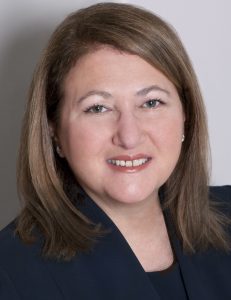EARTH DAY: Local researchers share concerns, optimism on Earth Day
By Daniel Dunaief
The weather outside has been frightful and local researchers suggest the trend has been anything but delightful.
Over the last year, the country has confronted numerous violent and intense storms, causing property damage and leading to evacuations and rescues. Just last week, Fort Lauderdale, Florida received a month’s worth of rain in an hour amid a storm that dumped over two feet of rain on the city. Such a torrential storm isn’t unique to Florida, as areas including Dallas experienced significant rains last August that crippled the city.

“The extremes are increasing,” said Malcolm Bowman, Professor Emeritus at the School of Marine and Atmospheric Sciences at Stony Brook University. “It’s part of the prediction of climate science.”
Indeed, as the atmosphere becomes warmer, the increase in water vapor raises the amount of rain in a particular storm, added Edmund Chang, Professor in the School of Marine and Atmospheric Sciences at Stony Brook University. Chang and other local scientists discussed their concerns and potential cause for optimism amid the approach of the 54th anniversary of Earth Day.
Climate Change report
This March, the Intergovernmental Panel on Climate Change (IPCC) released a report that suggested that climate change was worsening and that the Earth will likely increase by more than the 1.5 degrees Celsius above pre-industrial revolution averages that would lead to numerous environmental damage.
“Since the last IPCC report, there has been a lot more research looking at these weather extremes,” Chang said.

In warmer temperatures, which have increased on average for the Earth by 1.1 degrees, storms carry significantly more precipitation.
While it is outside the realm of his own research, Chang said that other researchers have demonstrated that storms in the Northeastern United States have had an increase in higher precipitation events, which is also linked to the fact that these storms are moving more slowly, drenching areas with rain before slowly leaving.
Chang is particularly concerned about sea level rise. “I have lived in coastal areas all my life,” he said. “We know that the sea level is rising. The rate of rise is accelerated.” Counteracting the effects of melting ice sheets in Greenland and the Antarctic are among the more difficult processes to mitigate, he added.
In his own research, Chang is assessing the bias in models that predict whether a season will likely be stormier than average. He is looking at how model biases may impact the accuracy of longer range forecasts.
Different models have different biases, he explained. Weather channel fans, and those who watch storm models for approaching hurricanes and other events, may recognize that meteorologists often overlay American and European weather models, particularly when describing approaching hurricanes.
In Chang’s research, he has found that combining different models improves the forecast. “A better way of improving models is to understand where the model biases or error comes from” rather than averaging errors that cancel each other out, he said.
Reasons for optimism
Chang believes there are reasons for optimism about efforts to mitigate the effects of climate change. The current administration is “starting to impose more stringent emissions controls from vehicles,” he said. “It’s getting a bit more encouraging.”
In other areas, world leaders have also taken encouraging steps towards protecting the oceans and biodiversity. Last month, the United Nations announced the legal framework for a High Seas treaty, which protects biodiversity, reduces pollutions and shares ocean resources. After 20 years of work, 193 countries verbally agreed to a treaty to protect 30 percent of the world’s oceans by 2030.

The treaty is “of monumental importance,” said Ellen Pikitch, endowed professor of Ocean Conservation Science and executive director of the Institute for Ocean Conservation Science at the School of Marine and Atmospheric Sciences at Stony Brook University. “The treaty will enable marine protected areas (MPAs) to be created in areas outside national jurisdictions and allow fisheries management of species in international waters not currently covered by regional agreements.”
Citing recent reports, Bowman said global emissions of carbon dioxide have declined 2 percent over the last 12 months. “There are moves, even in China, to bring in solar and wind” power, he added.
Local concerns
As storms hit areas like Florida and Texas, Long Islanders frequently wonder about the readiness of the region for future storms. Indeed, Hurricane Sandy wreaked havoc in the Middle Atlantic states in 2012.
“If we had another Sandy, it could be just as bad or worse,” said Bowman, who has been a part of a storm surge working group in New York.
In the fall, the Army Corps of Engineers published a tentatively selected plan for the area after the administration of President Biden (D) reinstated the Harbor and Tributary Study, which was temporarily halted in 2019. The plan doesn’t involve enough protection along the harbor with concrete and steel, Bowman said.
“They say [concrete] is terrible,” Bowman said. “We say it’s necessary.”
Any plan for flooding in and around the New York area would not only have to address how to handle a storm surge that brought water in from the ocean. It would also have to provide a way for any heavy rains to get out.
The reality of global warming is “scary,” said Bowman. And yet, “how many people are changing their living habits?”
As for his native New Zealand, Bowman said a tornado touched down in recent weeks, which is “unheard of.” While the tornado was not on the scale of such twisters in Kansas, he said it ripped through several homes.
New Zealand, with a population of five million people, is moving toward using electric cars, while the country is also considering a genetic modification in cattle that reduces the production of methane from when they burp or pass gas.
“There’s a big push in New Zealand to do its bit,” Bowman said.







